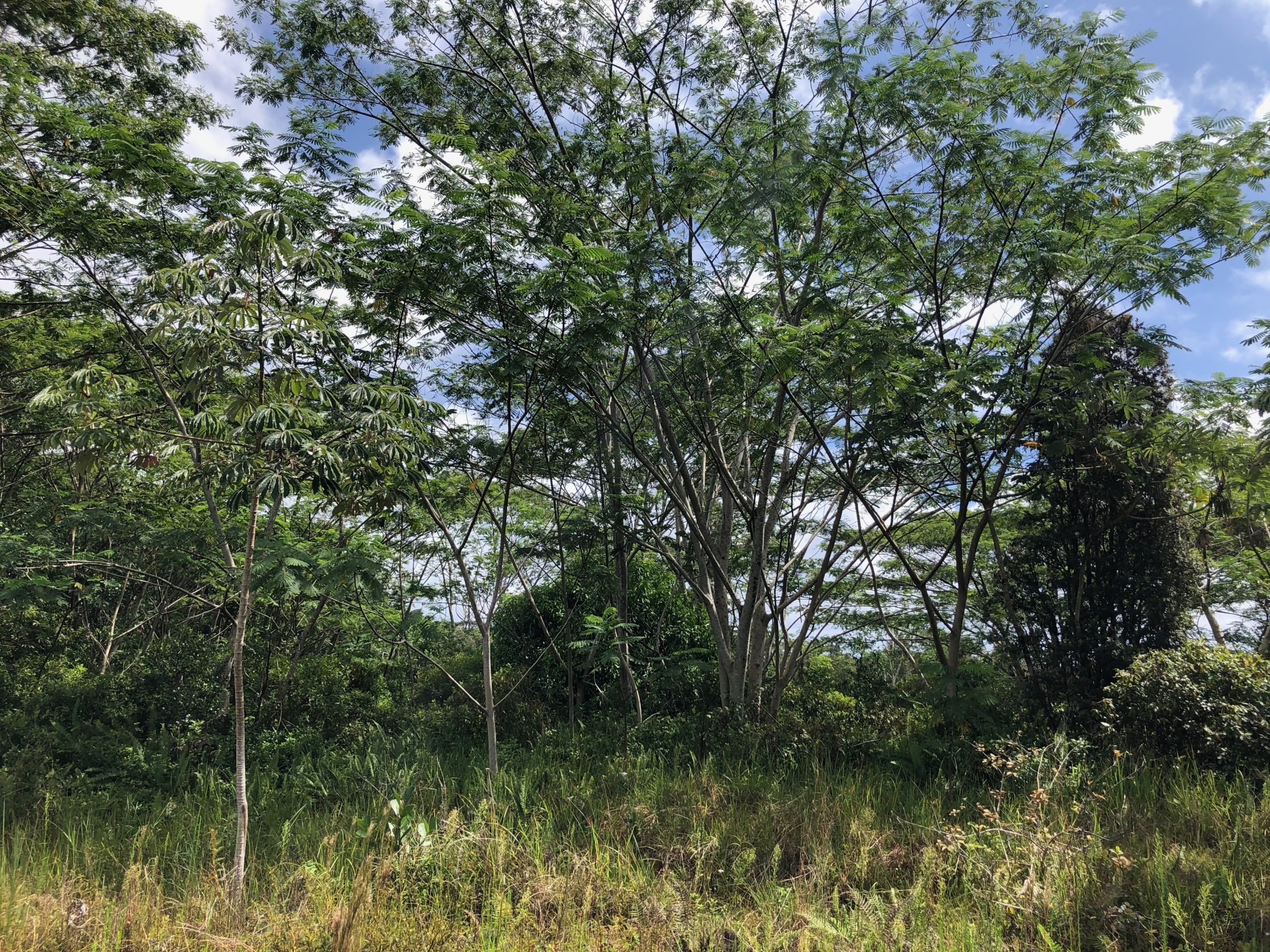
Managing Albizia


Assessing Trees for Hazard
When deciding on a method to manage albizia, the critical first step is determining whether the trees are hazardous. Any tree which would pose a threat to structures (including roads and utility lines) should be considered a hazard tree, regardless of height. A 200′ tall tree deep in the forest far from human habitation may be considered non-hazardous, while a 30′ tall tree directly next to a house could be a hazard – the hazard is defined by proximity to structures, not height alone. Hazardous trees of any height should not be treated or girdled and must be addressed by a qualified arborist.
Hiring an arborist: A qualified arborist must be certified for the required work, carry a class C27b contractor’s license (for work over $1,000), and carry insurance. There are separate certifications for tree care workers (under the supervision of a certified arborist), arborists, risk assessors, and working near power lines. An arborist is not required to be bonded, but if your tree threatens significant property or public access areas, you may want to explore this higher level of financial backing. Keep in mind that albizia does not “behave†like other trees, and you should not have your cousin from the mainland come in to help. Your arborist should have experience felling albizia in Hawai‛i and be able to provide local references.
Tips for saving money on arborists: if there is open space on one side of the tree, ask your arborist about a “hard trim” that will allow for the removal of threatening limbs and then chemical treatment for the rest of the tree. Also, keep in mind that chipping and removal can be a significant portion of the cost – if you don’t mind leaving the large boles of the tree to decompose naturally on your property, you may be able to get a lower price from your arborist. Be sure that any stumps remaining are treated with herbicide while freshly cut, or the albizia will grow back in a multi-stem mess.
Management of Non-hazardous Albizia
All dead trees have the potential to be dangerous. The methods described below are NOT for large trees that are overhanging structures, roads, and power lines. For these hazard trees, contact a certified arborist for removal.
Chemical Control
For non-hazardous trees, BIISC recommends using very small amounts of Milestone herbicide applied to small cuts into the vascular tissue of the tree. Known as the incision point method or “hack-and-squirt†approach, this method cause trees to lose their leaves over the course of a couple of weeks, and is an easy and inexpensive way to treat young albizia. This method may be used on very large trees, but keep in mind that the area will not be safe until the heavy limbs have completely fallen from the tree. This can take 3-5 years. (BIISC offers hands-on training in albizia control – follow us on Facebook or Instagram for notifications of these opportunities!)
- Using a hatchet or machete, make incisions ‛hacks’ at a 45-degree angle into the sapwood (just under the bark, into the pink-white tissue)
- small trees (diameter less than 12″): hacks 6-10″ apart
- medium trees (diameter 1-2′): hacks 4-5″ apart
- large trees (diameter > 2ft): hacks 2″ apart all the way around the trunk
- Apply 0.5 ml of undiluted herbicide into each hack
- Tree will begin defoliating within days.
Physical Control
Albizia seedlings can be pulled out by hand before their root system becomes well-established. There are two techniques that you can choose from to control larger, non-hazardous trees.
- Girdling: This method entails the complete removal of a band of the inner and outer cambium layers approximately six inches to one foot wide from around the entire circumference of the tree.
- Common tools used to strip the bark from the tree include hand tools such as a machete, hatchet, or handsaw.
- Typical results include defoliation within one year followed by tree death. This method is fairly labor-intensive and repeat treatments may be necessary.
- Ring-barking: This control method entails the complete removal of the inner and outer cambium layers from around the entire circumference of the tree.
- Common tools used to strip the bark from the tree include hand tools such as a machete, bark, spud, or draw blade.
- First, incisions are made around the base of the target tree at the soil level. The bark is then stripped from the soil up the trunk (approx. 4-6 feet).
- This technique is fairly low cost and can be used by virtually anyone. Results are highly effective with defoliation occurring between six months to one year, and death of the tree eventually following.



